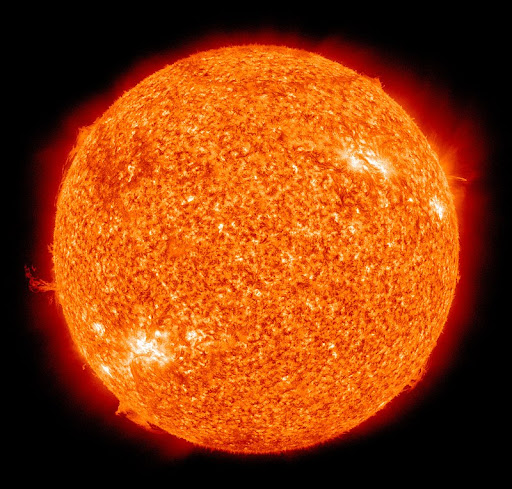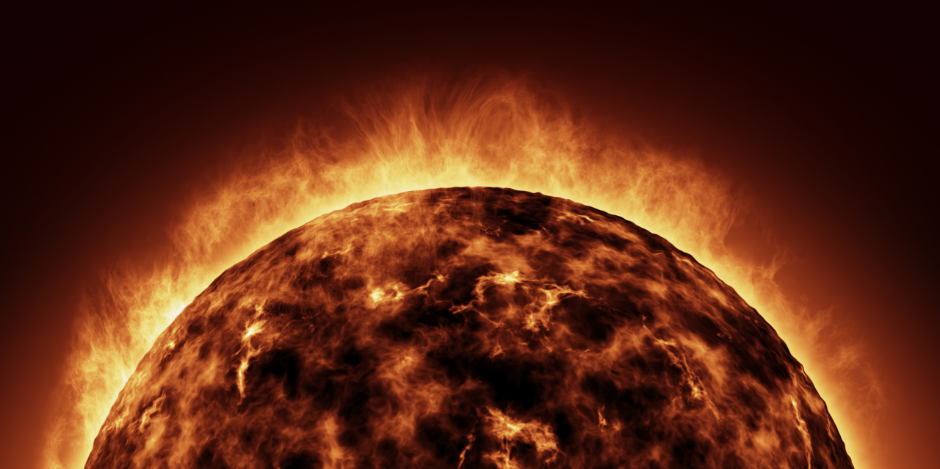
As craft accelerate as they approach the Sun, determining how long would it take to get to the sun, may not be as straightforward as you would expect. And by ‘get there’ where exactly do we mean? We can’t land on the Sun, there is no solid surface and atmospheric temperatures are extreme. So are there any missions planned? and if so, what is the expected flight time and orbital destination? Let’s take a look.
The Sun – Quick Facts
- Age: 4.6 Billion Years
- Type: Yellow Dwarf (G2V)
- Mass: 1,989,100,000,000,000,000, 000 billion kg (333,060 x Earth)
- Diameter: 1,392,684 km (109 x Earth)
- Circumference at the Equator: 4,370,005.6 km
- Surface Temperature: 5,500 °C
- Internal Temperature: 15 million °C
- Composition: 72% Hydrogen, 26% Helium
- Energy output: Solar Radiation
- Rotation: 27 days
- Revolution: 225 to 250 million years
- Sunlight Travel Time: 8 minutes to reach Earth
- Apparent Magnitude: −26.74
- Average Distance To Earth: 150 million km (93 million miles)
- Closest Distance to Earth: – Appx 147.1 million km (0.983 AU)
- Furthest distance to Earth: – Appx 152.1 million km (1.017 AU)

How far is Earth from the Sun?
At its closest (perihelion), the Sun is around 91.4 million miles (147.1 million km) away from the Earth. This occurs annually between 3 – 6th of July, a few weeks after the summer solstice. At its farthest (aphelion), the Sun is around 94.5 million miles (152.1 million km) away from the Earth. This happens in the northern winter, between the 2 – 4th of January annually. These seasonal differences occur due to elliptical orbit that the Earth has around our star. The Earth, however, is moving away from the Sun very slowly, at about 15cm a year!
How Long Would it Take to Get to the Sun?
There are many missions that have been launched to explore and examine the Sun, but most of these do so from an Earth orbit, or one of the Earth-Sun Lagrange Points rather than a solar orbit. There are however, a few that have been sent to orbit and explore the Sun directly. The closest we have been able to get to our star is with the latest Parker Solar Probe, which in December 2021 ‘touched’ the Sun’s corona.
The varying missions all had different objectives and observed from different distances. Some were flybys and some more complex. So in terms of how long it would take to get there, using existing or previous missions as an example, the time depends greatly on mission objective and type.
That aside, there are a few things that need to be taken into account when calculating a visit to our star. Objects get quicker as they approach the Sun. So if you plan on slowing down when you get there a planetary assist or two is critical to help decelerate to a useful speed.
What is the Shortest Trip?
The shortest trip to the sun by any craft so far, is also the latest mission to have been sent to our star. The Parker Solar Probe, is the fasted spacecraft we have launched so far. It was launched on August 12th, 2018 and just over two months later on October 29, 2018 it became the closest object ever sent to the Sun. The Parker Solar Probe has still to achieve its closest pass of the Star. It has conducted many gravity assists using Venus to reduce it’s trajectory. Each time bringing the probe closer to the Sun.
How Often Does The Closest Approach Occur?
The Earth’s orbit is around the Sun, and it completes a full orbit every year. The closest approach (perihelion) therefore happens on a predicable annual schedule, between January 2 – 4 each year.

Missions To the Sun
Many space probes have been sent to study our only star. The Sun does not have a solid surface so we cannot send missions for landing. It is also very hot which makes it a great challenge to have a close-up peek into this big burning fireball.
Still, that does not limit us from exploring from afar. And with the advancements made over the years, NASA’s Parker Solar Probe has even gone as close to “touching” the Sun’s surface.
Many Sun-watching spacecraft are still operational. Examples are the Solar Orbiter, Advanced Composition Explorer (ACE), Interface Region Imaging Spectrograph (IRIS), the Wind Spacecraft, Solar Terrestrial Relations Observatory (STEREO), the Hinode Satellite, and the Solar Dynamics Observatory. Most craft study the Sun from an orbit around the Earth, or one of the Earth-Sun Lagrange points.
Below are some other missions sent to learn more about the Sun.
Pioneer 5
The Pioneer 5 orbiter was launched in 1960 to study the interplanetary space between Venus and Earth. It was supposed to head to Venus but it changed route and entered the solar orbit instead.
During its 3-month course, it was able to obtain useful information about solar flares and the magnetic field phenomena.
Ulysses
In October 1990, NASA partnered with ESA (European Space Agency) to launch the Ulysses spacecraft. It was a highly successful mission that lasted for nearly 19 years. It studied the solar wind and the Sun’s magnetic field, among others.
Ulysses was the first spacecraft to study the Sun from above and below its poles. It had a couple of mission extensions throughout its course where it also encountered three comet tails.
Parker Solar Probe
The Parker Solar Probe has been the closest we have ever been to the Sun yet. Flying at a speed of around 700,000 kph (430,000 mph), it has reached the Sun’s corona in December 2021. This is a great first which means that a man-made spacecraft has finally “touched” the Sun.
The probe sent valuable data and images as it entered the Sun’s outer atmosphere. It was bombarded by jets of plasma as it entered the corona. Among its many findings are about the “switchback” of solar winds and magnetic field changes around the coronal area
On an average jet plane, flying at 550 miles per hour, it would take 19.29 years, or 7,045 days to travel the 93 million miles to the Sun.
At an average distance of 93 million miles from Earth, if you were to drive there at 60 MPH it would take approximately 63,588 days, or 176.8 years!
At an average constant stride of 3 MPH, it would take approximately 31,000,000 hours, 1,291,667 days, or 3,536 years to reach the Sun!